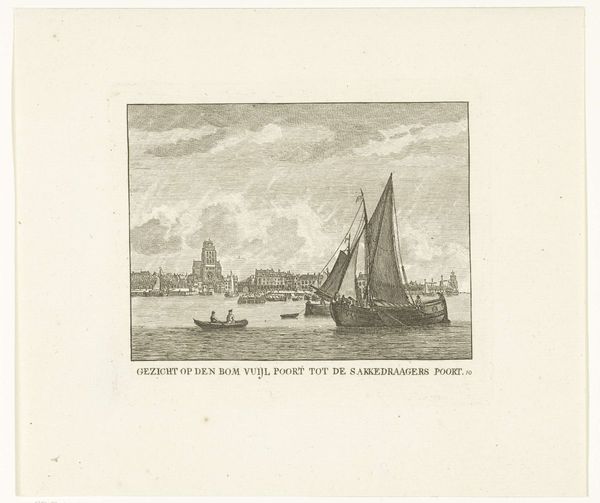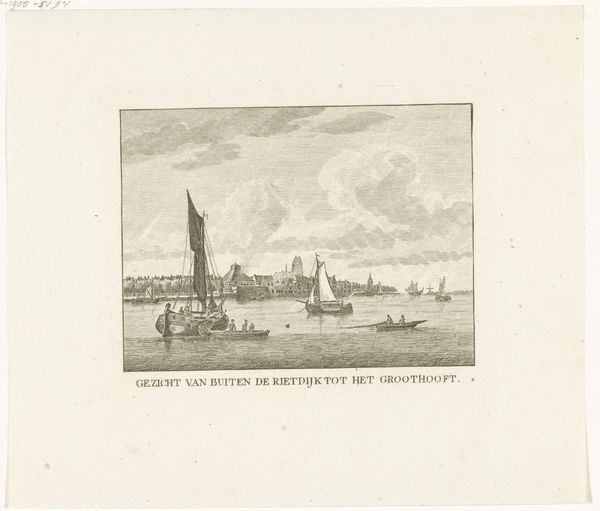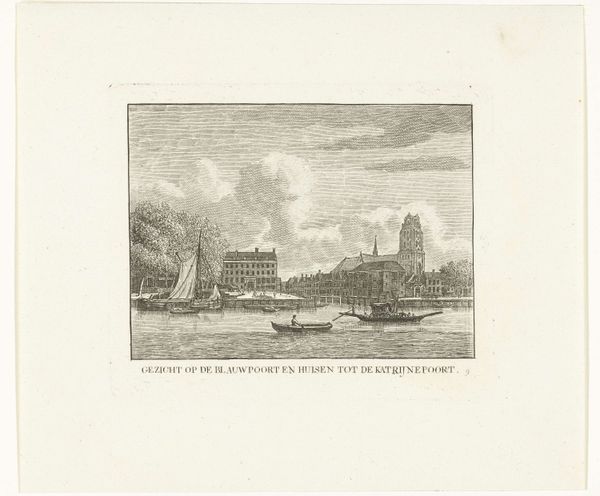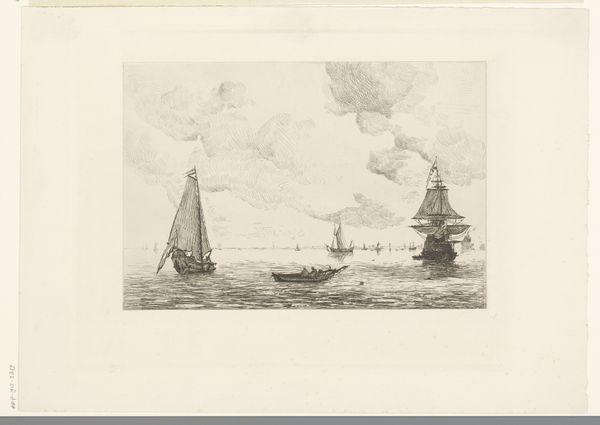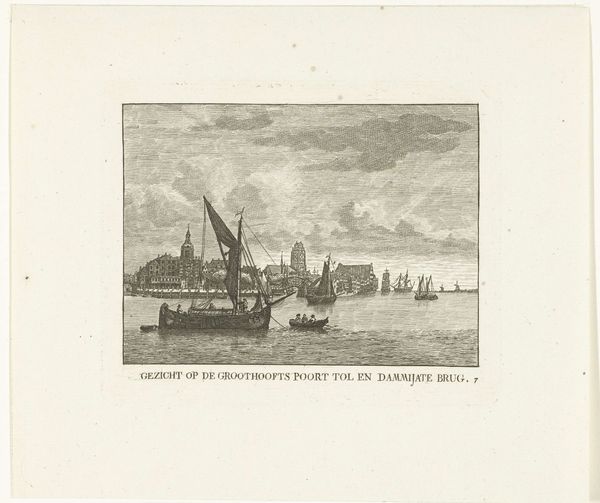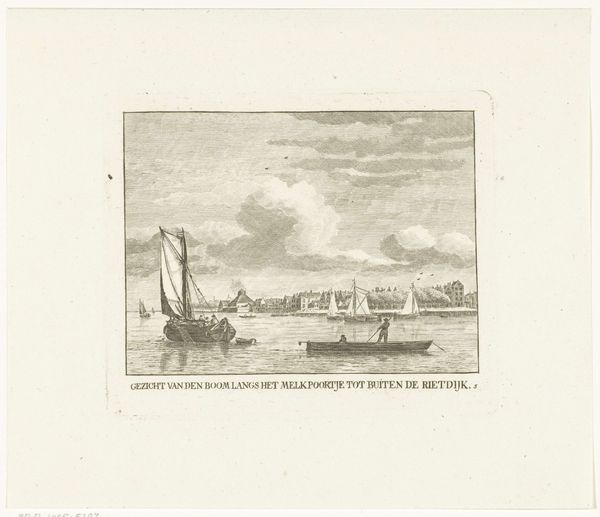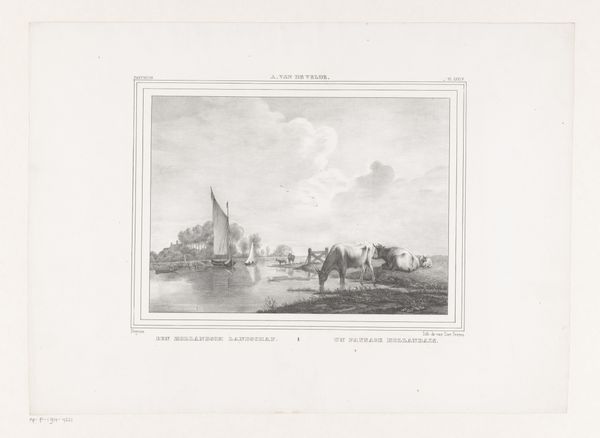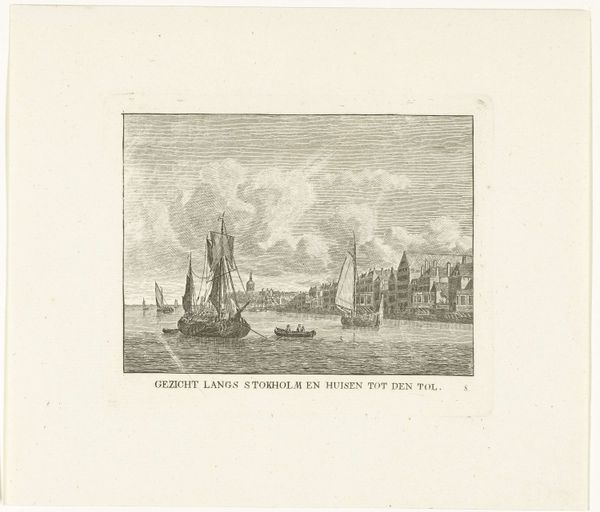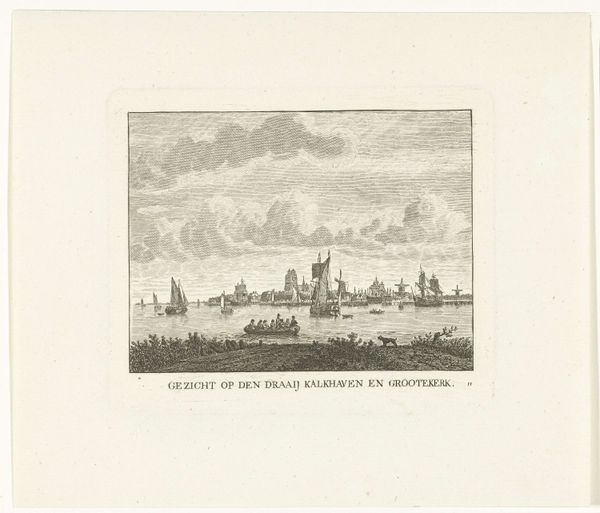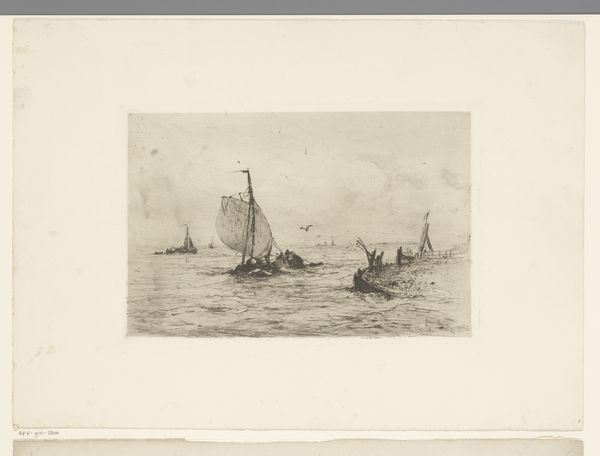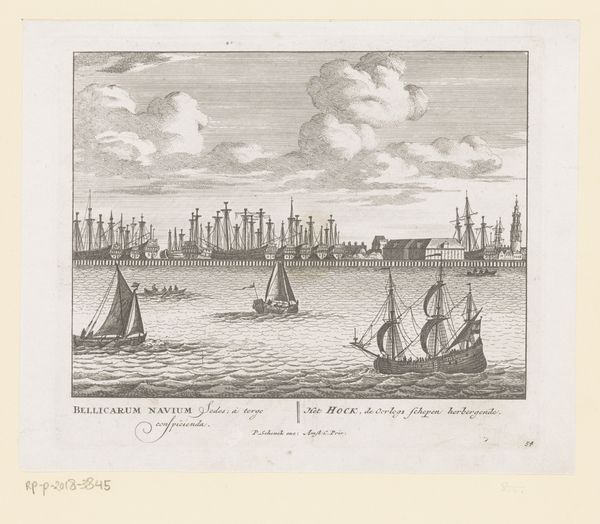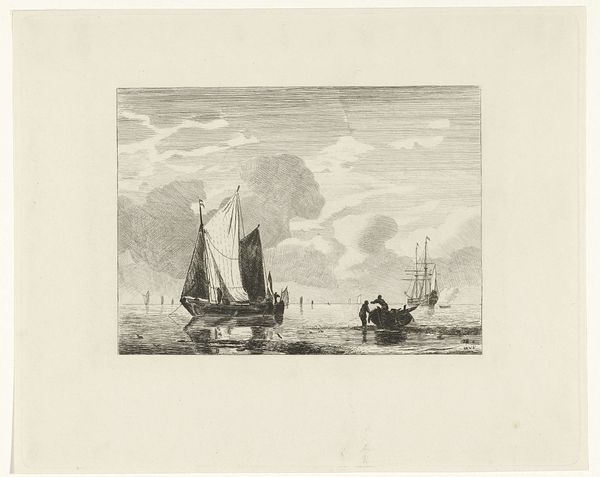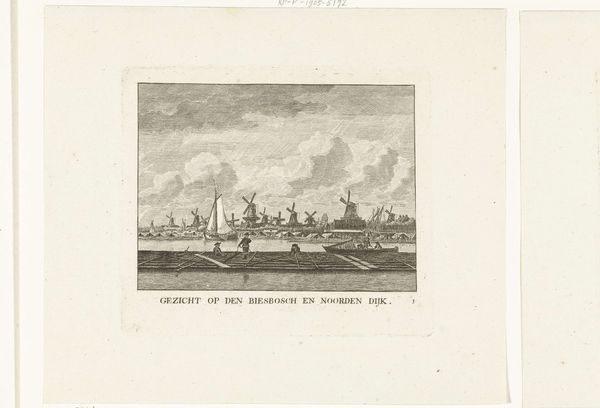
Gezicht op Dordrecht met in verte Molenhoofd, Riedijksepoort en stadsherberg 1803
0:00
0:00
carelfrederikibendorp
Rijksmuseum
print, engraving
#
dutch-golden-age
# print
#
old engraving style
#
landscape
#
river
#
cityscape
#
engraving
Dimensions: height 123 mm, width 143 mm
Copyright: Rijks Museum: Open Domain
Curator: Here we have Carel Frederik Bendorp's 1803 engraving, "View of Dordrecht with Molenhoofd, Riedijksepoort, and the City Inn in the Distance," a wonderful piece held here at the Rijksmuseum. Editor: It strikes me as wonderfully balanced. The placement of the boats, that dark silhouette against the lighter cityscape—it creates such depth with minimal tonal variation. Curator: Absolutely, and it shows us Dordrecht during a time of transition. Notice the inn—places like that played a vital role in the Dutch economy, facilitating trade and travel along the waterways. It provided services but also fostered societal connections for different populations. Editor: Yes, but consider how Bendorp directs the viewer's gaze. Those windmills on the horizon aren’t just a quaint feature, the use of perspective emphasizes their function; the river acting as a dynamic plane slicing the entire work and carrying vessels in both directions. It's cleverly done. Curator: Indeed! The emphasis on the vessels is vital; depicting a hub bustling with trade is crucial. Those boats were Dordrecht's lifeblood. It is fascinating to see this documented just prior to the major Napoleonic wars which had huge political, social, and economic repercussions for The Netherlands and Dordrecht's strategic relevance. Editor: Although stark in terms of coloration, it isn’t completely devoid of emotional qualities. The light seems soft despite being suggested by line alone; consider how that diffuses on the water surface, then reflects to soften the rigid lines of the structures in the background. There is something peaceful, even melancholic here. Curator: A lovely observation. Bendorp clearly wants to depict the town as industrious and welcoming. Editor: It all contributes to this carefully structured piece! This really offers such clarity; the placement of objects and forms truly directs us, allowing the whole picture to work—it comes alive even through those monochrome methods. Curator: It definitely exemplifies a pivotal moment in Dutch social history that one can examine today, through these visual documents such as this one, in our museums and collections.
Comments
No comments
Be the first to comment and join the conversation on the ultimate creative platform.
